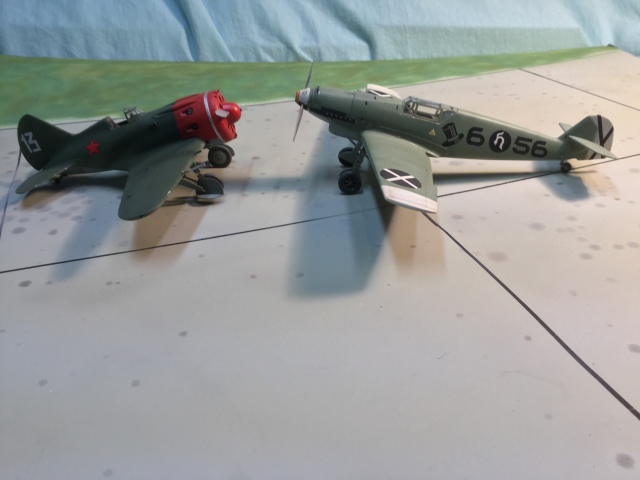The most common images of Germany’s famous Messerschmitt fighter are of the well refined “E” or “G” models during World War II. But earlier versions of the fighter saw combat too, and the decision to use the type fighting for the Fascist Spanish Nationalist side in the Spanish Civil War provided experience that would serve the German Luftwaffe well at the outbreak of World War.
Join me for a look at that earlier conflict.
When Germany first decided to help Francisco Franco and his Fascist revolutionaries against the Republican government of Spain, the Luftwaffe’s main fighter was the He51 bi-plane. The German contingent, fighting alongside Italian CR.32 fighters were initially dominant. But when the Republicans gained help from the Soviet Union the situation quickly reversed itself. The Soviet I-15 and I-16 fighters were far superior to the German He51. The Italian CR.32 fared better; although still a bi-plane, it was faster and more capable than the German fighter.

Hauptmann Handrick’s plane has mostly standard Kondor Legion (the Luftwaffe “volunteers” serving in Spain) markings. Exceptions being the script “h” in the national insignia on the fuselage and Olympic rings on the spinner.
This led to Germany sending a number of their new Bf109 fighters. Initially this even meant pre-production types that struggled to achieve parity with the Soviet I-16. Ultimately this struggle served Germany very well. It led to serious studies of tactics, and much of the Luftwaffe leadership gained valuable experience in Spain. Most famous of these was Werner Molders, who was the Luftwaffe’s top ace and tactician. Molder’s greatest contribution was more flexible and fluid tactics that would make the Luftwaffe very hard to beat over the next few years.
The Bf109D was a direct follow on of the Bf109C with only minor changes, and these aircraft achieved total domination of Spanish skies. Very late in that war a few Bf109E models were used, but it was these earlier models that carried most of the burden. When the Fascists finally won the war in early 1939, all the foreign “helpers” returned home but 60 or so Messerschmitts of all models were left behind.
Hauptmann Handrick’s Bf109 shown with celebratory wreaths after the first kills were scored.

The Soviets supplied I-16 fighters (at left) to the Republican (Communist) side that quickly proved to be the best fighter in Spain; UNTIL German Bf109 was given to the Nationalist (Fascist) units.
This particular aircraft is from the Hobbycraft kit with Aeromaster decals. It shows a plane flown by Hauptmann Gotthardt Handrick. His main claim to fame was having won an Olympic Gold Medal in Pentathlon at the 1936 games. He was an ace with five kills in Spain (although records only confirm two, both scored in this airplane). In World War II he scored another ten kills, but was quickly promoted to the point where he flew little combat.






A very nice model of a paint scheme that you don’t see too often for this aircraft.
Thanks, I do like different!
I love the Jumo 210 powered 109’s, very nice example Dave, great work!
They definitely look cleaner than the later models.
Correct me if I’m wrong, but I believe this 109 had a Constant Speed Propeller and fuel injection long before the British.
Yeah that’s right. The British were just bringing the constant speed propeller into use as the war started, I believe it was in wide service by the Battle of Britain. Fuel injection is a whole other story; later Merlins had a negative-G carburetor, but were never fuel injected.
And I believe the constant speed propeller was an American invention, at least the version used by the US and Britain was.
Reblogged this on My Forgotten Hobby and commented:
Another great build and post from Plane Dave
Thanks Pierre!
To be honest… I reblog, I like, then I read…
I am never disappointed Dave.
Never.
I’m flattered, Awesome!
This isn’t a terribly sophisticated comment, but this model looks way to advanced to have a two blade propeller. I expect that on a P-26, not a Messerschmitt.
The Jumo engine apparently didn’t generate enough power for it to be an issue!
No doubt it doesn’t look quite right, but early Spitfires and Hurricanes also had two bladed props.
Bigger propellers, multi-speed and constant-speed propellers were all new things that would be used in the immediate future.